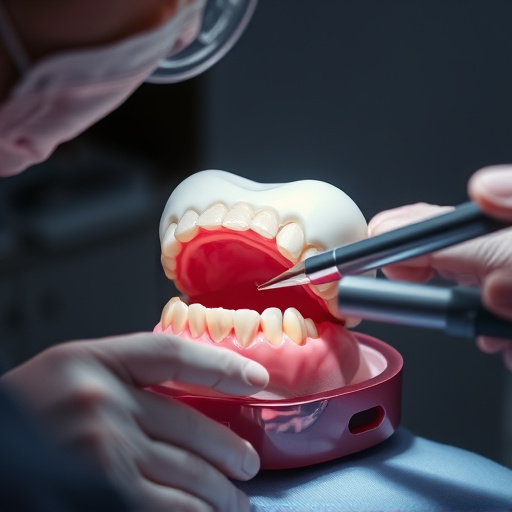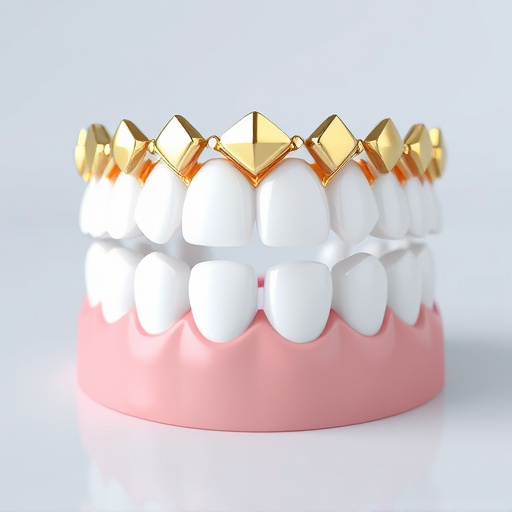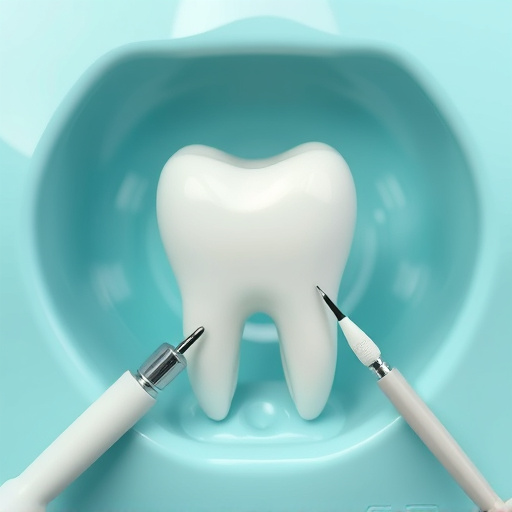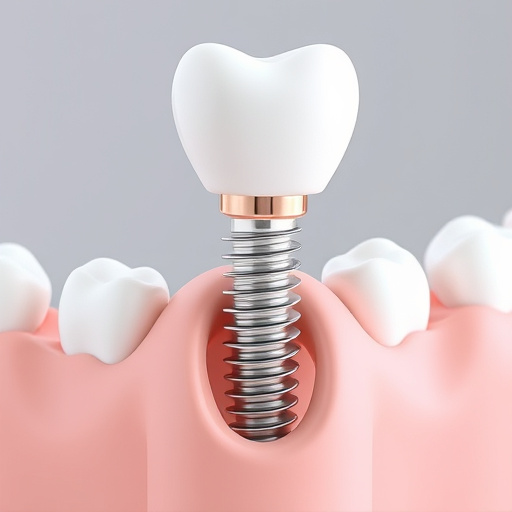Scaling and root planing deep cleans teeth by removing plaque and tartar buildup below the gumline, treating gum disease, and preventing tooth decay. This non-invasive procedure includes scaling to remove plaque and root planing to smooth tooth roots, fostering healthier gums and lasting oral health with proper aftercare.
Are you tired of dealing with dental plaque buildup? Look no further than scaling and root planing—a powerful treatment duo designed to combat stubborn plaque and tartar. This comprehensive procedure not only deep cleans your teeth but also smooths the roots, providing a fresh and healthy smile. In this article, we’ll delve into the science behind scaling and root planing, explore its numerous benefits, and guide you through the aftercare process, ensuring you’re well-prepared to maintain that newfound oral health.
- Understanding Plaque: The Dental Enemy
- Scaling and Root Planing: How It Works
- Benefits and Aftercare: A Fresh Smile Revealed
Understanding Plaque: The Dental Enemy

Plaque, a slimy, bacteria-laden film, is the arch-nemesis of oral health. It constantly forms on our teeth and gums, even after meticulous brushing and flossing. This stealthy enemy quietly contributes to serious dental issues like tooth decay and periodontal disease. While regular dental cleanings, including scaling and root planing, effectively remove plaque buildup, understanding its nature is key to preventing future problems.
Scaling and root planing goes beyond a standard cleaning. It involves deep cleaning the pockets where gums attach to teeth, removing stubborn plaque and tartar that regular brushing misses. This restorative dentistry procedure not only combats existing issues but also helps reattach gums to teeth, promoting healthier oral tissue and potentially averting more invasive treatments down the line—a true game-changer in the battle against plaque and its damaging effects.
Scaling and Root Planing: How It Works

Scaling and root planing is a deep cleaning procedure that targets plaque buildup along the gumline and below it, where dental tools can reach. It involves two main steps: scaling and root planing. Scaling removes plaque and tartar (hardened plaque) from the surfaces of your teeth and gums using specialized instruments. Root planing goes deeper, smoothing and polishing the roots of your teeth to eliminate any irregularities that allow bacteria to stick. This process not only helps prevent gum disease but also stops plaque buildup, which is a major cause of tooth decay.
This treatment is often recommended when regular dental cleanings (including thorough teeth cleaning) are not enough to control plaque. Even after dental cleanings and good oral hygiene practices, some areas may be hard to reach, allowing plaque to accumulate. In cases where gum pockets have deepened due to chronic inflammation, wisdom tooth removal might also be considered to facilitate better cleaning and reduce the risk of further complications.
Benefits and Aftercare: A Fresh Smile Revealed

After scaling and root planing treatments, patients often experience a fresh, renewed smile. This non-invasive procedure effectively removes plaque buildup and tartar from the teeth and gumline, promoting better oral health. By eliminating these sources of infection, gums heal, and the risk of tooth decay and gum disease significantly decreases.
The aftercare process is relatively straightforward. Patients are typically advised to maintain good oral hygiene practices, including regular brushing and flossing, to prevent future plaque accumulation. In some cases, dental professionals may recommend additional treatments like dental fillings or, in extreme instances, tooth extractions to address any underlying issues. Proper care ensures the longevity of the results and keeps your smile healthy and vibrant.
Scaling and root planing treatments offer a powerful solution for combating plaque buildup, restoring oral health, and achieving a brighter smile. By thoroughly cleaning below the gumline, these procedures address the root cause of gum disease and prevent further damage. With proper aftercare, individuals can enjoy lasting benefits, including improved gum health, reduced inflammation, and a fresh, confident smile. Embrace this evidence-based approach to dental care for a healthier, more vibrant oral landscape.














